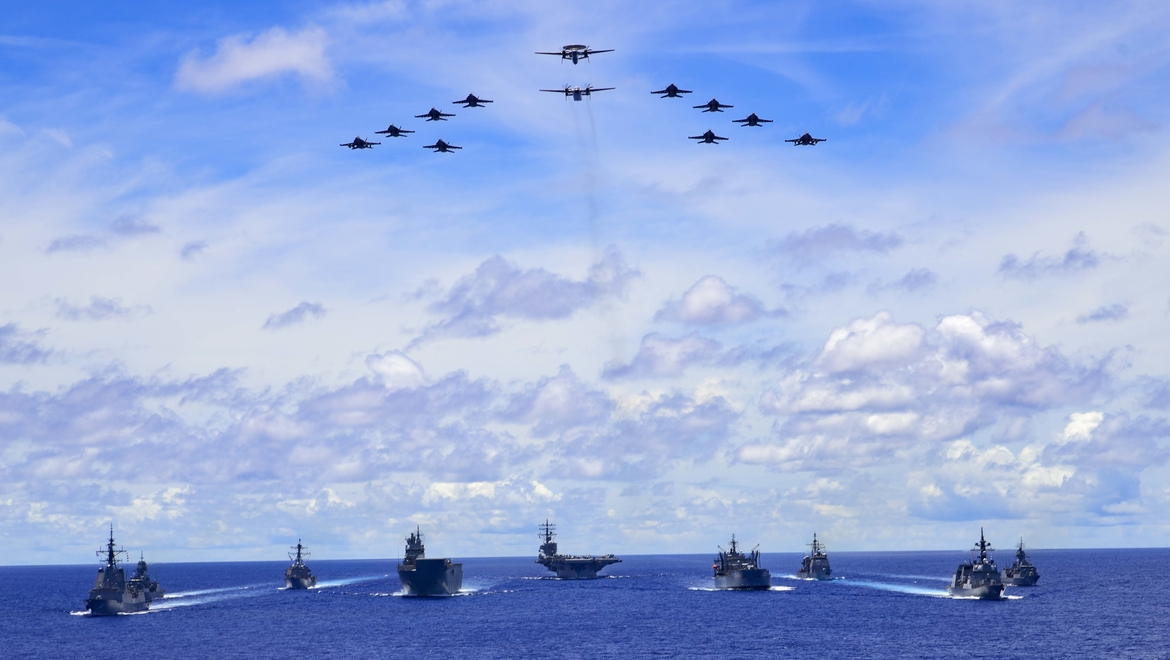Three of the countries participating in Exercise Rim of the Pacific (RIMPAC) – Australia, Japan and the US – are currently conducting a trilateral passage in the Philippine Sea on their way to Hawaii.
To continue reading the rest of this article, please log in.
Create free account to get unlimited news articles and more!
A biennial exercise, RIMPAC is designed to strengthen international maritime partnerships, enhance interoperability and improve the readiness of participating forces for a wide range of potential operations.
An Australian Defence Force Joint Task Group departed Darwin on 5 July, bound for Hawaii. The fleet comprises of HMA Ships Canberra, Hobart, Stuart, Arunta and Sirius, and has joined foreign counterparts to conduct replenishment at sea, aviation operations, maritime manoeuvres and communications drills on their way to the exercise.
The trilateral passage, which is being conducted in waters off the Philippines, is planned to conclude on 23 July 2020.
The Australian contingent joins the USS Ronald Reagan Carrier Strike Group, which includes the US Navy’s guided-missile cruiser USS Antietam and guided-missile destroyer USS Mustin, as well as the Japan Maritime Self-Defense Force’s Akizuki Class destroyer JS Teruzuki.
According to Commodore Michael Harris, the Joint Task Group's commander, the ability to "co-operate seamlessly" with the Japanese and US navies is invaluable to the RAN.
“The combined activities between our navies demonstrates a high degree of interoperability and capability between Australia, Japan and the US,” he said.
This point was reiterated by his counterparts in the JMSDF and the USN.
Captain Sakano Yusuke, Commander of Japan’s Escort Division 4, said that the "exercise will give us tactical and operational advantages and make our friendships stronger, in addition to our regular joint exercises with both like-minded navies”.
On his part, US Navy Captain Russ Caldwell, Commanding Officer USS Antietam, added that the US Navy routinely exercised with regional partners, doubling down on their shared commitment to regional stability and a free and open Indo-Pacific.
“The relationships we've developed enable us to meet at sea and immediately operate at an advanced level. This highlights the enduring nature of our alliances with Japan and Australia,” CAPT Caldwell said.
"The United States is fortunate to routinely operate alongside its allies across the Indo-Pacific and co-ordinated operations like these reinforce our mutual commitment to international maritime norms and promoting regional stability."
Throughout the co-operative exercise period, participants will operate and train together, exercising integrated maritime operations in an all-domain warfighting environment.
Professional integrated engagements allow the US Navy and allies the opportunity to build upon existing strong relationships and improve collective readiness and response to any situation. This year also marks the 60th anniversary of the treaty of mutual co-operation and security between the US and Japan.

 Login
Login







